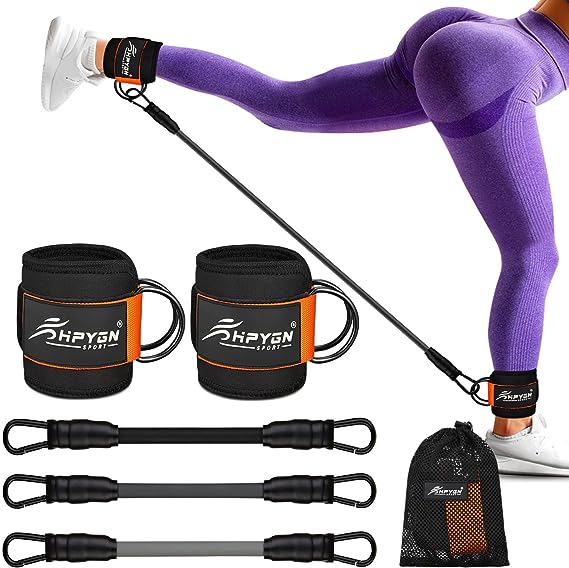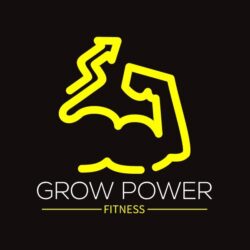Introduction
If you’re looking to achieve a fit and well-rounded physique, focusing on your lower body is essential. A targeted lower body workout not only helps you achieve shapely legs and toned glutes but also improves overall strength, stability, and mobility. Whether you’re a fitness enthusiast or a beginner, this article will guide you through an effective lower body workout routine that targets key muscle groups, leaving you feeling confident and empowered.
The Importance of Lower Body Training
Before we delve into the specific exercises, it’s crucial to understand the significance of lower body training for your overall fitness. The lower body comprises significant muscle groups, including the quadriceps, hamstrings, calves, and glutes. Strengthening these muscles not only enhances your athletic performance but also supports everyday movements like walking, running, and climbing stairs.
A strong lower body also helps prevent injuries, as it provides stability and balance during physical activities. Additionally, focusing on the lower body can aid in fat burning and weight loss, as these large muscle groups require more energy during exercise.

Pilates Bar Kit with Resistance Bands(4 x Resistance Bands),3-Section Pilates Bar with Stackable Bands Workout Equipment for Legs,Hip,Waist and Arm,Exercise Fitness Equipment for Women & Men
Warm-Up: Preparing Your Muscles
Like any workout, starting with a proper warm-up is crucial to prevent injuries and optimize performance. Begin with five minutes of light cardio, such as brisk walking or jogging, to increase blood flow and raise your body temperature. Follow this with dynamic stretches, such as leg swings, hip circles, and bodyweight squats, to loosen up your joints and muscles.
Warming up prepares your body for the upcoming exercises by gradually increasing your heart rate and circulation. It also improves your range of motion and flexibility, allowing you to perform the exercises with better form and effectiveness.
Targeting the Quadriceps
The quadriceps, a group of four muscles at the front of your thighs, play a vital role in leg extension and knee stabilization. To strengthen your quadriceps, incorporate the following exercises:
Squats
Squats are a fundamental lower body exercise that engages the quads, hamstrings, and glutes. Stand with your feet shoulder-width apart, lower your hips back and down as if sitting on an imaginary chair, then return to the starting position. Keep your back straight and chest lifted throughout the movement.
To add variation, you can perform goblet squats with a dumbbell or kettlebell held close to your chest. Another option is the sumo squat, where you have a wider stance and your toes pointed slightly outward.
Lunges
Lunges are excellent for isolating each leg, helping to correct muscle imbalances. Step forward with one leg and lower your body until both knees are bent at a 90-degree angle. Push back up and repeat on the other leg.
For an additional challenge, try reverse lunges by stepping backward instead of forward. Walking lunges are also effective, as you step forward with one leg and continue by stepping forward with the other.

Resistance Bands, Exercise Workout Bands for Women and Men, 5 Set of Stretch Bands for Booty Legs, Pilates Flexbands
Engaging the Hamstrings
The hamstrings, located at the back of your thighs, complement the quadriceps in knee flexion and hip extension. Strengthen your hamstrings with the following exercises:
Deadlifts
Deadlifts are a powerful compound exercise that targets the hamstrings, glutes, and lower back. With a slight bend in your knees, hinge at your hips while holding a barbell or dumbbells. Lower the weight towards the ground, then return to a standing position by squeezing your glutes.
For variation, you can perform Romanian deadlifts, where your knees remain slightly bent throughout the movement. Single-leg deadlifts are also effective for targeting each hamstring individually.
Leg Curls
Leg curls isolate the hamstrings. Lie face down on a leg curl machine and curl your legs towards your glutes. Lower the weight slowly and repeat for a complete set.
If you don’t have access to a leg curl machine, you can perform stability ball leg curls. Lie on your back with your feet on the ball, lift your hips off the ground, and curl the ball towards your glutes using your legs.
Toning the Glutes
The glutes are the largest muscles in the body and are responsible for hip extension and pelvic stability. Sculpt and strengthen your glutes with the following exercises:
Glute Bridges
Lie on your back with your knees bent and feet flat on the ground. Lift your hips towards the ceiling, engaging your glutes and core. Lower your hips back down and repeat.
To increase the difficulty, try single-leg glute bridges, where you lift one foot off the ground while performing the exercise. You can also place a resistance band above your knees to add lateral resistance.
Bulgarian Split Squats
Stand a few feet away from a bench or elevated surface. Place one foot on the bench behind you and lower your body into a lunge position. Push back up and repeat on the other leg.
For an advanced version, try adding dumbbells to increase resistance and challenge your glutes further.

Ankle Resistance Bands with Cuffs, Ankle Bands for Working Out, Resistance Bands for Leg Butt Training Exercise Equipment for Kickbacks Hip Gluteus Training Exercises, Ankle Strap with Exercise Bands
Conclusion
Incorporating a well-rounded lower body workout into your fitness routine is essential for overall strength, balance, and mobility. By targeting the quadriceps, hamstrings, and glutes, you can achieve shapely and toned legs while enhancing your athletic performance and daily functionality.
Now, it’s time to step up and challenge yourself with this effective lower body workout. Remember to start with a warm-up to prepare your muscles and always maintain proper form during exercises to avoid injuries.
FAQs
Is it necessary to use weights in a lower body workout?
Weighted exercises can add resistance and intensity to your lower body workout, but bodyweight exercises can still be effective for building strength and muscle.
How often should I perform a lower body workout?
Aim to train your lower body 2-3 times per week, with at least one rest day between sessions to allow for muscle recovery.
Can I do lower body workouts if I have knee pain?
If you have knee pain, it’s essential to consult a healthcare professional or a certified trainer to modify exercises and prevent further discomfort.
Are squats bad for my back?
Squats, when performed with proper form, can actually strengthen your core and lower back muscles, reducing the risk of back pain.
Can I do a lower body workout at home without equipment?
Yes, there are many effective bodyweight exercises that can be done at home to target your lower body muscles.

